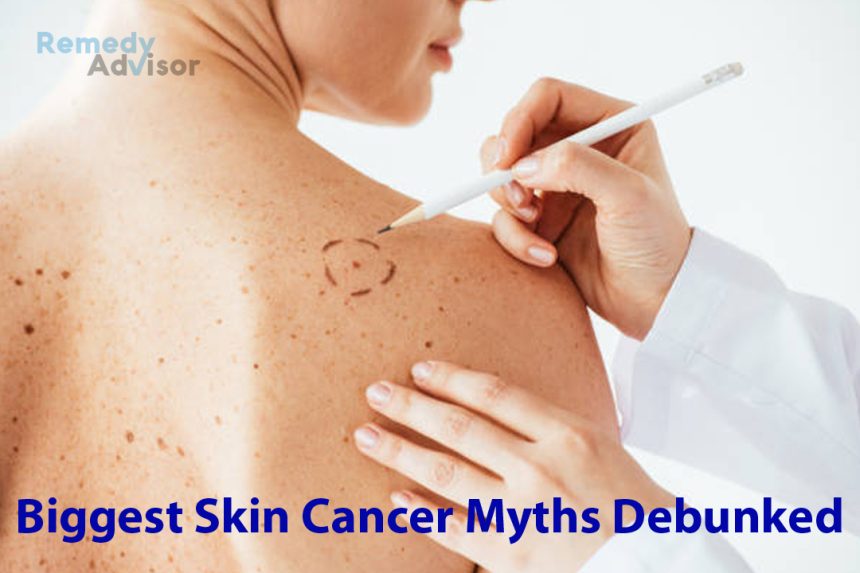Everyone knows that excessive sun exposure is dangerous, yet up to 50% of people over age 65 are diagnosed with melanoma or some other type of skin cancer.
Why? Even health-savvy individuals remain confused about the best ways to adequately protect their skin. Most dangerous myths…
Myth #1: A beach umbrella keeps you safe from the sun.
Reality: When you’re at the beach, a large percentage of ultraviolet (UV) light bounces off the sand onto your skin, even when you are beneath an umbrella. Water and snow have the same reflective effect.
When boating or sitting beneath a beach umbrella, apply a sunscreen to all the exposed areas, including your face and neck even if you’re wearing a brimmed hat. When skiing, apply sunscreen to your face and neck.
Myth #2: Sunscreen with a sun-protection factor (SPF) of 45 is three times more effective than SPF 15.
Reality: Most doctors suggest using a sunscreen with an SPF of 15. Higher SPF won’t give you extra safety. Sunscreen that has an SPF of 45 is just about 5% more defensive than an SPF 15 sunscreen. The higher-rated sunscreen doesn’t last longer, either.
All sunscreens need to be reapplied every two hours and whenever you’re exposed to water. This includes “waterproof’ sunscreens, which provide some protection while swimming but still must be reapplied.
Make sure your sunscreen is labeled “broad spectrum” meaning that it blocks both ultraviolet A (UVA) and ultraviolet B (UVB) rays. Look for titanium dioxide or Parsol 1789 in the listing of ingredients.
Myth #3: Sunscreen provides complete sun protection.
Reality: While sunscreen is essential, there are other steps you also should take. The most important is to minimize sun exposure between 10 am and 4 pm, when the sun’s rays are most intense. Hit the beach in the early morning or late afternoon instead.
To protect the commonly neglected areas, be sure to wear…
- UV-protective lip balm with an SPF of 15 or higher.
- A hat with a three-inch brim. Baseball caps don’t protect the ears or the back of the neck common skin cancer sites, especially for golf and tennis players.
- UV-protective sunglasses. UV exposure can cause cataracts.
- Sun-protective clothing. UV rays can pass through many fabrics, including cotton. If you hold a garment up to a light and can see the shape of the bulb shining through, it’s not pro¬ viding adequate sun protection.
Many companies offer lightweight, tightly woven garments designed for comfort and maximum protection.
Example: Solumbra 30+ SPF sun protective clothing
If you will be outdoors and don’t have special clothing, be sure to wear sunscreen under your shirt.
Myth #4: Family history is the best indication of skin cancer risk.
Reality: A family history of skin cancer is a major risk factor but the most important factor is your own skin type. People who have light colored skin and eyes (blue or green) and freckles are at highest risk for all types of skin cancer and sun-related skin damage, such as wrinkles.
People with many moles, freckles and spots have the next-highest cancer risk, followed by individuals with a family history of skin cancer. If you have any of these risk factors, you need to carefully monitor your sun exposure.
When the skin is exposed to sunlight, it increases the body’s production of melanin, the main skin pigment. This results in tanning, in which a brown color is imparted to the skin. The more difficult it is for you to tan, the more vulnerable you are to skin cancer.
If you’re dark-skinned, tan easily, doesn’t have many moles and have no family history of skin cancer, your risk is low but you should still protect yourself from the sun.
Myth #5: Building a “base” tan protects against sunburn.
Reality: There is no such thing as a “safe” tan. UV exposure increases lifetime risk of skin cancer and other skin damage. Rather than expose yourself to those pre-vacation rays, protect yourself by following the rules described in this article.
Myth #6: “Self-tanning” products help protect against sunburn.
Reality: Self-tanning products are perfectly safe and are a good way to appear tan without any sun exposure. However, the dyes in these products do not offer UV protection. Some of these products do contain sunblock but this provides only two hours of protection following application.
Myth #7: Melanoma occurs only where the skin has been exposed to the sun.
Reality: Sun exposure is just one of the potential causes of melanoma. For unknown reasons, cancerous moles can also develop under the arm, between the buttocks or toes or on the bottom of the foot. If you have a mole, spot or freckle anywhere on your body that shows a sudden change in size, shape or color, get it checked by a dermatologist.
Myth #8: Melanoma is always deadly.
Reality: When limited to the top layers of the skin, melanoma has a cure rate of 100%. That’s why it’s important to do a monthly self-exam of all skin surfaces, using a full-length and a handheld mirror.
You should also get screened annually by a dermatologist (twice a year, if you have skin cancer risk factors). During the screening, the doctor should use epiluminescence microscopy (ELM). This new technique, which involves examining moles with a handheld microscope, detects melanoma earlier than ever.







